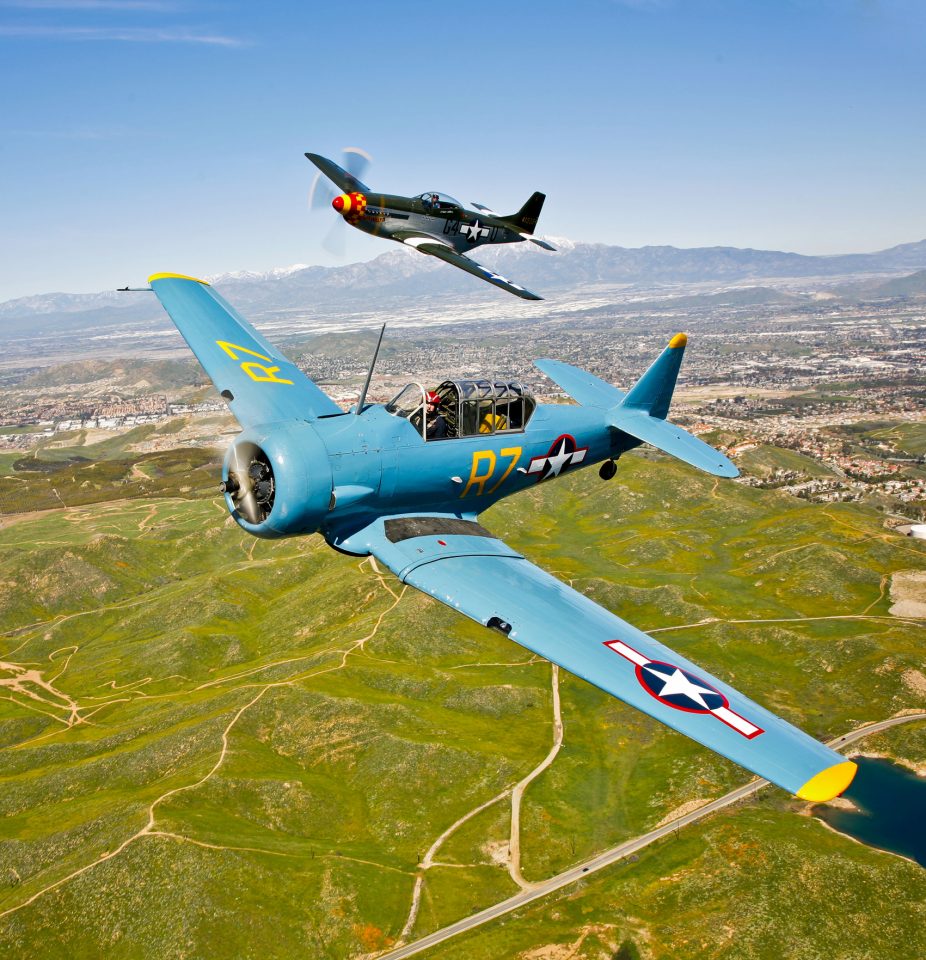
This week’s featured historic aircraft—the North American T-6 Texan—is known by many different names. The manufacturer, North American Aircraft, named it the Texan. The U.S. Army Air Corps dubbed it the AT-6 (later simply T-6). The Navy called it the SNJ. And in the British Royal Air Force, it was called the Harvard. But no matter what name you call it, the T-6 is an influential aircraft best known for training thousands of military pilots in countries all over the world.
First introduced in 1937 by North American Aviation, the Texan was designed to serve as a low-cost training aircraft for fighter pilots. The single-engine, two-place aircraft is 29.5 feet in length, with a wingspan of 42 feet. When powered by a 600-horsepower Pratt & Whitney R-1340 radial engine, the Texan can reach speeds of up to 205 mph.
While the Texan wasn’t as fast as most fighter planes, it was easy to maintain and repair. Most importantly, it was versatile. The Texan was used to train pilots in all types of advanced maneuvers including spins, rolls, and loops, as well as combat tactics like aerial dogfighting, ground strafing, and bombardment. It could also be fitted with machine guns, bomb racks, and blind flying instrumentation for advanced training. Due to its remarkable success as a trainer, the Texan earned yet another nickname: “The Pilot Maker.”
Although it was originally made for training, the T-6 has also been used in combat as a fighter, fighter-bomber, and interceptor. Texans were also used as spotter planes for battlefield surveillance and forward air control. Along with serving in World War II, Korea, and Vietnam, the Texan was also used in counterinsurgency operations by developing countries around the world.
Between 1937 and the early 1950s, it’s estimated that more than 17,000 Texans of all variants were built by North American and other manufacturers to meet the high demand for advanced trainers. By the late 1950s, the Texan was retired from active duty and phased out of the U.S. Air Force and Navy, and many surplus aircraft were sold to civilians.
Today, hundreds of Texans are owned by private pilots, who are passionate about keeping the aircraft’s proud legacy alive. The popular warbird has been flown in movie productions, air show demonstrations, and formation flights. There’s even a racing class devoted to Texans at the National Championship Air Races in Reno, Nevada. Check out this video to see the T-6 in action at the National Championship Air Races.